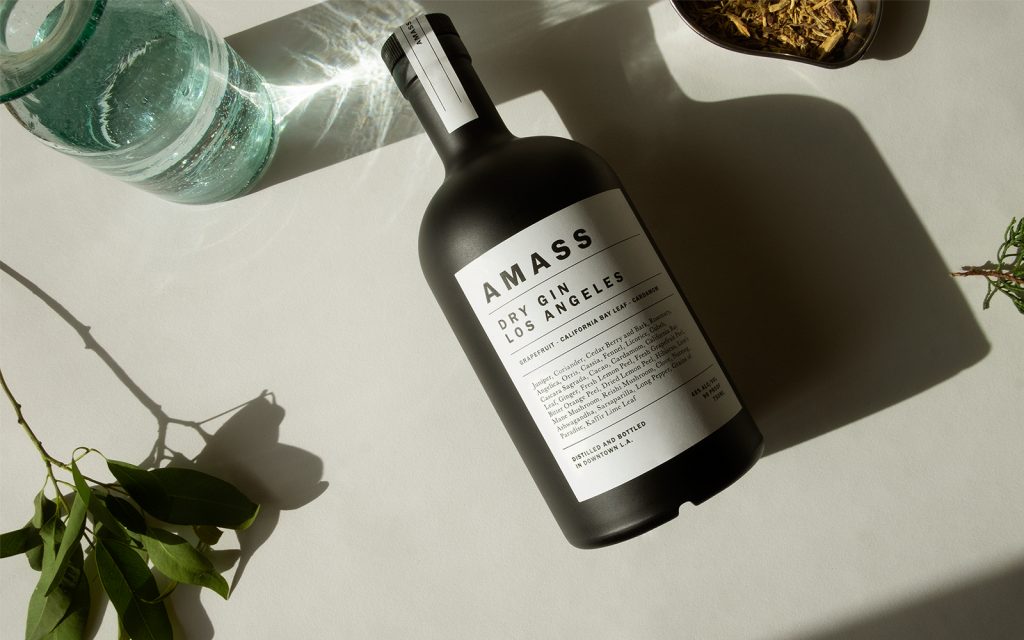Hendrick’s Fantastical New Distillery in Girvan, Scotland
Part curiosity cabinet and part laboratory, the gin’s wondrous new home
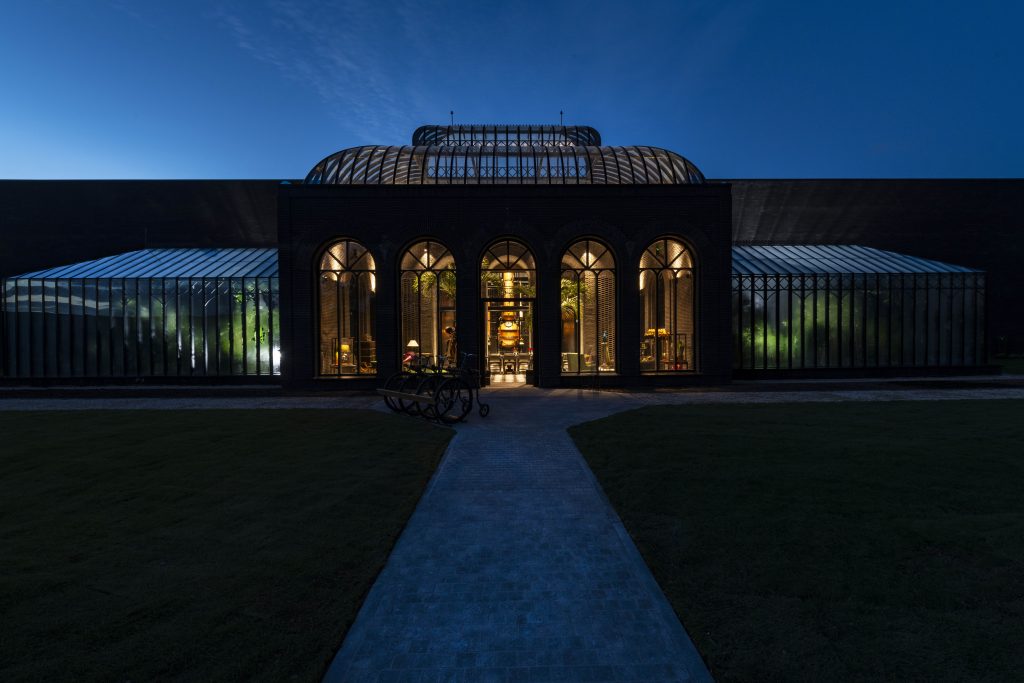
The brand new Hendrick’s Gin distillery in Girvan, Scotland is just as beautiful and whimsical as one could imagine. The new distillery and visitor center (which is not open to the public but will be used to host guests of the brand) is the perfect physical realization of the charms and oddities that make Hendrick’s truly Hendrick’s—it’s a mix between a mad scientist’s laboratory, your fabulous uncle’s weekend home, and a cathedral for those who worship at the altar of gin.
Ever since its launch in 1999, Hendrick’s Gin has delighted imbibers with the unusual and the delightfully imaginative: branding based on linotype prints reminiscent of Joseph Cornell’s surrealist collages, a dark and mysterious apothecary style bottle, and the liquid itself—a beautifully balanced and complex gin with the signature flavors of cucumber and rose. At the time of its creation, a gin made with flavors outside of the traditional juniper profile was practically unheard of, but consumers loved it and Hendrick’s has become a new classic style of gin. In turn, Hendrick’s has remained ever-loyal to the cucumber and rose—nods to the English gardens that inspired the brand. Instead of traditional rocks glasses, Hendrick’s gift packs are sold with teacups and cucumber cultivation kits. Hendrick’s Gin has perfectly captured a world of eccentricity in its brand: full of oddities and charming curiosities.
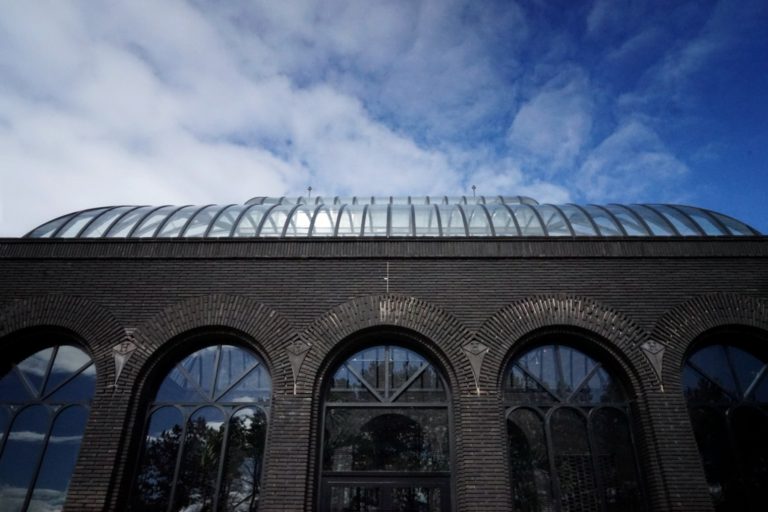
The new distillery is built on the Girvan distilling site where William Grant produces grain whisky, but is physically and visually separated from the rest of the grounds with a tall, black brick wall. Visitors ring a giant bell upon arrival and walk through a set of repurposed cathedral doors. Over the wall is a surrealist version of a traditional English garden, a gazebo that will one day be covered in vines (presumably cucumbers and roses) and rolling green hills. While not yet complete, the gardens already feel like Alice and Wonderland meets Salvador Dalí—a formal garden with unexpected twists and innovations. Kitchen gardens and wild flowers are planned for next summer, with pathways for visitors to wander and explore.
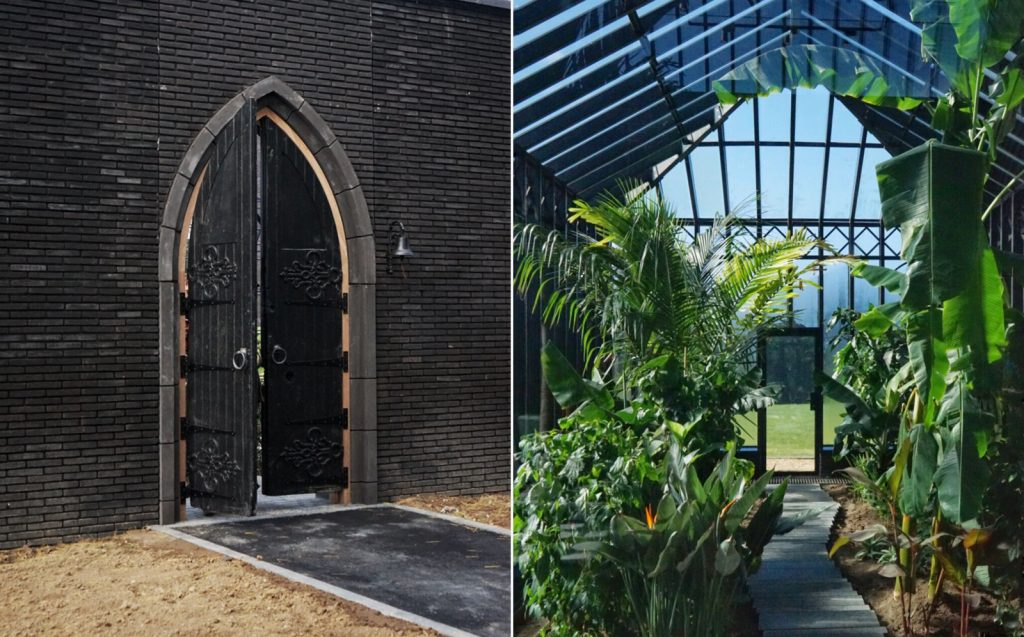
At first glance, the distillery is both grand and modest. The somewhat unassuming box with an atrium attached to the front of the building is built from black brick and glass, reminiscent of gothic architecture and the utilitarian warehouses of the industrial revolution. Five soaring brick arches indicate the foyer of the building, the arcade inscribed with capital Hs.
It’s almost impossible to walk into the foyer without gasping. The soaring atrium feels open and airy while cozy and intimate. Throughout the atrium are nods to the Victorian era: greenhouses, seating areas with fringed lamps, bookcases filled with curios and Hendrick’s bottles, taxidermy peacocks, and quirky garden follies.
 A long table sits in the center of the room, ready for lavish dinner parties filled with poetry readings, ghost stories, performances, and of course, delicious cocktails (perhaps served from the distillery’s “Wee Little Lad,” a peeing boy statue water fountain repurposed for gin punch). The light-filled foyer is flanked by two hot houses, one designed to house tropical plants, and the other designed for citrus, one of Master Distiller Lesley Gracie’s favorite moments in the new distillery. “They are going to be where I grow plants for experimentation. We’ve got lots of citrus in one and lots of tropical plants the other,” she tells us, “I’ve got two good environments there that I would not be able to replicate in the garden itself.”
A long table sits in the center of the room, ready for lavish dinner parties filled with poetry readings, ghost stories, performances, and of course, delicious cocktails (perhaps served from the distillery’s “Wee Little Lad,” a peeing boy statue water fountain repurposed for gin punch). The light-filled foyer is flanked by two hot houses, one designed to house tropical plants, and the other designed for citrus, one of Master Distiller Lesley Gracie’s favorite moments in the new distillery. “They are going to be where I grow plants for experimentation. We’ve got lots of citrus in one and lots of tropical plants the other,” she tells us, “I’ve got two good environments there that I would not be able to replicate in the garden itself.”
Just behind the greenhouse foyer are three of the distillery’s stills prominently on display: two Bennett Stills, and one Carter-Head Still, encased in glass in a large room painted inky black and topped with a stained-glass rosette window decorated with roses and cucumbers. The stills are impossible to miss when entering—they are massive, copper beauties that are shiny, curvaceous and oddly sensual.
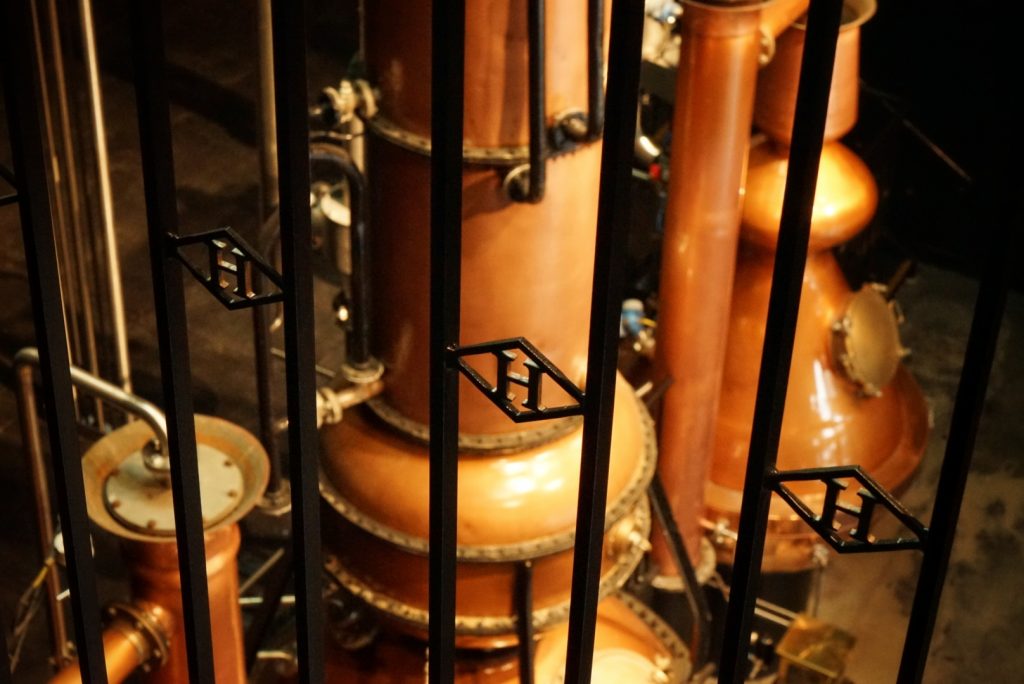
The original stills are the true heart of the brand and are lovingly referred to as children. The stills were purchased in 1966 at an auction, and were installed in the original Gin Palace—a small warehouse on the Girvan distilling site. It was important that Hendrick’s Gin be made exactly the same way in the new distillery, and although the original Bennett Still has been reproduced and is on display in the distillery, it holds a special place in Gracie’s heart. She says, “It’s my favorite child, she was built in 1860. She’s just perfect, she works as well as the day she was manufactured.”
The use of two different types of stills is essential to Gracie’s recipe for Hendrick’s Gin. The Bennett Still steeps botanicals in 60% neutral grain spirit, and the Carter-Head Still infuses flavor into 60% neutral grain spirit as the vapors pass through the still’s flavor basket. The same botanicals are added to both stills: juniper, orange peel, lemon peel chamomile, caraway seeds, elderflower, orris root, coriander seeds, yarrow, angelica root, and cubeb berries. The two methods of distillation extract different compounds from the botanicals; the Bennett Still brings out the complex flavors of juniper, coriander and angelica, whereas the Carter-Head Still draws forth the bright flavors of citrus and flowers. It is the combination of the distillates that creates the complexity inherent to Hendrick’s Gin, the base spirit to which essential oils of cucumber and rose are added.
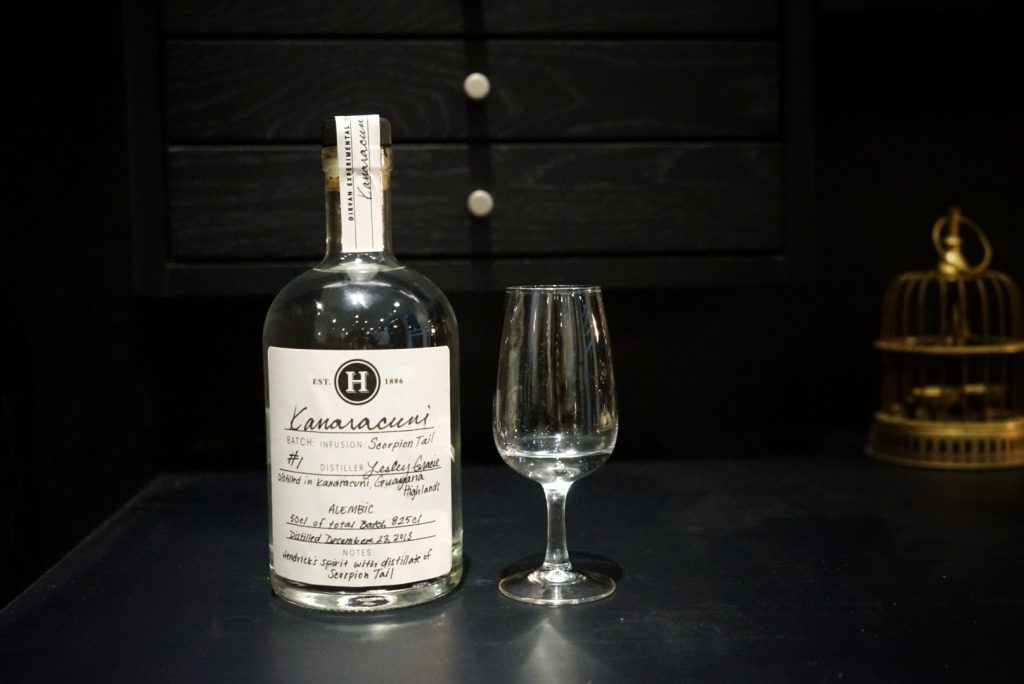
Gracie is rigorous in her distilling methods. She is very much a scientist: precise while curious about new flavors and methods of production. In 2013 she traveled to South-West Venezuela to visit indigenous communities, where she discovered the Scorpion Tail flower that had a unique sense of terroir that linked it to the region. She distilled as many of the flowers as she could, and later blended it with the Hendrick’s base distillate, making Kanaracuni Gin, a limited edition gin that has aromas of flowers, orange peel, and violets with flavors of sweet and spicy citrus fruit, candied flowers, with a crisp herbal note. It is divine.
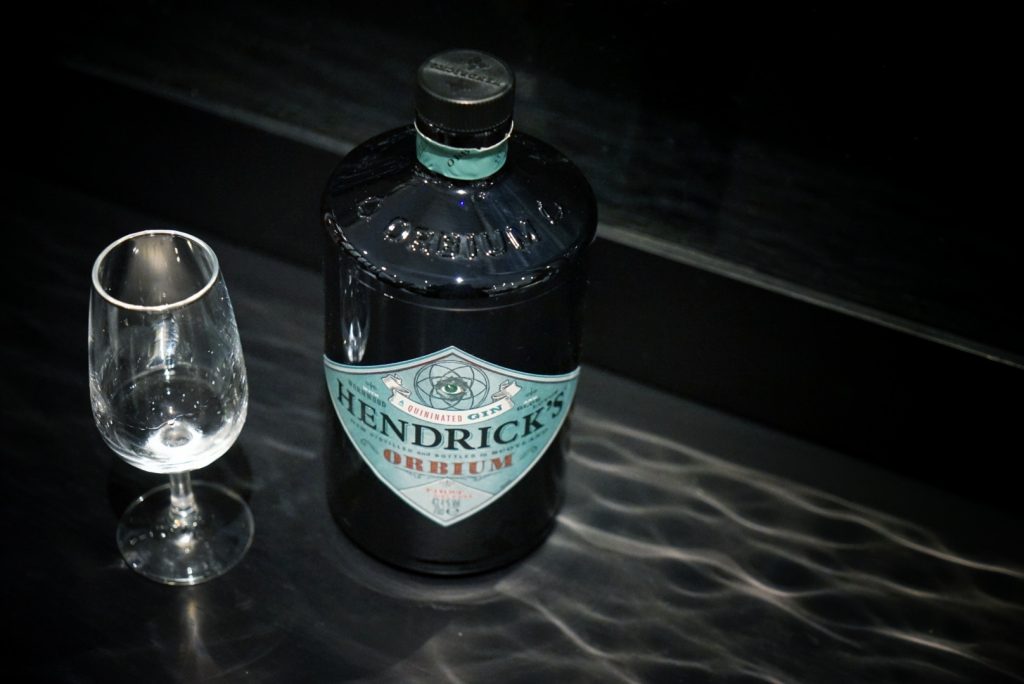
Hendrick’s Orbium is Gracie’s latest creation, a “quininated gin” made with wormwood (often found in vermouth) and Lotus Blossom, one of Gracie’s favorite flavor profiles. The new gin, which is scheduled to be released in the US in early 2019, has bright citrus and floral notes in combination with the cucumber and rose flavors we know and love.
Gracie is entering a new phase of creativity with her distilling, which should have us all very excited given her experiences leading liquid development for many of the William Grant & Sons non-whisky brands including Reyka Vodka, Sailor Jerry Spiced Rum, Solerno, and the almost-impossible to find Discarded Vermouth. She now has the dream distillery—and greenhouses—to create whatever she can imagine.
Images by Emily Arden Wells
